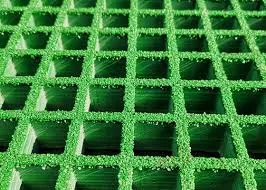
-
 Afrikaans
Afrikaans -
 Albanian
Albanian -
 Amharic
Amharic -
 Arabic
Arabic -
 Armenian
Armenian -
 Azerbaijani
Azerbaijani -
 Basque
Basque -
 Belarusian
Belarusian -
 Bengali
Bengali -
 Bosnian
Bosnian -
 Bulgarian
Bulgarian -
 Catalan
Catalan -
 Cebuano
Cebuano -
 China
China -
 China (Taiwan)
China (Taiwan) -
 Corsican
Corsican -
 Croatian
Croatian -
 Czech
Czech -
 Danish
Danish -
 Dutch
Dutch -
 English
English -
 Esperanto
Esperanto -
 Estonian
Estonian -
 Finnish
Finnish -
 French
French -
 Frisian
Frisian -
 Galician
Galician -
 Georgian
Georgian -
 German
German -
 Greek
Greek -
 Gujarati
Gujarati -
 Haitian Creole
Haitian Creole -
 hausa
hausa -
 hawaiian
hawaiian -
 Hebrew
Hebrew -
 Hindi
Hindi -
 Miao
Miao -
 Hungarian
Hungarian -
 Icelandic
Icelandic -
 igbo
igbo -
 Indonesian
Indonesian -
 irish
irish -
 Italian
Italian -
 Japanese
Japanese -
 Javanese
Javanese -
 Kannada
Kannada -
 kazakh
kazakh -
 Khmer
Khmer -
 Rwandese
Rwandese -
 Korean
Korean -
 Kurdish
Kurdish -
 Kyrgyz
Kyrgyz -
 Lao
Lao -
 Latin
Latin -
 Latvian
Latvian -
 Lithuanian
Lithuanian -
 Luxembourgish
Luxembourgish -
 Macedonian
Macedonian -
 Malgashi
Malgashi -
 Malay
Malay -
 Malayalam
Malayalam -
 Maltese
Maltese -
 Maori
Maori -
 Marathi
Marathi -
 Mongolian
Mongolian -
 Myanmar
Myanmar -
 Nepali
Nepali -
 Norwegian
Norwegian -
 Norwegian
Norwegian -
 Occitan
Occitan -
 Pashto
Pashto -
 Persian
Persian -
 Polish
Polish -
 Portuguese
Portuguese -
 Punjabi
Punjabi -
 Romanian
Romanian -
 Russian
Russian -
 Samoan
Samoan -
 Scottish Gaelic
Scottish Gaelic -
 Serbian
Serbian -
 Sesotho
Sesotho -
 Shona
Shona -
 Sindhi
Sindhi -
 Sinhala
Sinhala -
 Slovak
Slovak -
 Slovenian
Slovenian -
 Somali
Somali -
 Spanish
Spanish -
 Sundanese
Sundanese -
 Swahili
Swahili -
 Swedish
Swedish -
 Tagalog
Tagalog -
 Tajik
Tajik -
 Tamil
Tamil -
 Tatar
Tatar -
 Telugu
Telugu -
 Thai
Thai -
 Turkish
Turkish -
 Turkmen
Turkmen -
 Ukrainian
Ukrainian -
 Urdu
Urdu -
 Uighur
Uighur -
 Uzbek
Uzbek -
 Vietnamese
Vietnamese -
 Welsh
Welsh -
 Bantu
Bantu -
 Yiddish
Yiddish -
 Yoruba
Yoruba -
 Zulu
Zulu
frp storage tank
Understanding FRP Storage Tanks A Comprehensive Overview
Fiber Reinforced Polymer (FRP) storage tanks have gained significant popularity in various industries due to their unique properties and advantages over traditional materials. These tanks are primarily composed of a polymer matrix reinforced with fibers, offering enhanced strength, durability, and resistance to environmental factors. This article delves into the features, benefits, applications, and considerations associated with FRP storage tanks.
Key Features of FRP Storage Tanks
FRP storage tanks are distinguished by their lightweight yet robust construction. The composite materials used in these tanks provide exceptional resistance to corrosion, which is crucial when storing aggressive chemicals or fluids. Unlike steel tanks that can rust and degrade over time, FRP tanks maintain their integrity even in harsh environmental conditions.
Furthermore, FRP tanks can be manufactured in various shapes and sizes, making them suitable for diverse applications. Their modular design allows for easy transportation and installation, which is beneficial in environments where space efficiency is paramount.
Benefits of Using FRP Storage Tanks
1. Corrosion Resistance One of the standout features of FRP tanks is their ability to withstand corrosion. This property is especially advantageous in industries that handle corrosive substances, such as the chemical, pharmaceutical, and wastewater treatment sectors.
2. Lightweight and Durable The lightweight nature of FRP storage tanks simplifies installation and reduces transportation costs. Despite their lightness, these tanks are durable, capable of withstanding significant pressure and impact without compromising structural integrity.
3. Thermal Insulation FRP tanks also boast excellent thermal insulation properties, making them ideal for storing temperature-sensitive materials. This feature helps maintain the quality of stored liquids and minimizes energy consumption when temperature control is necessary.
frp storage tank

4. Low Maintenance FRP tanks require minimal maintenance compared to traditional materials. Their resistance to wear and tear means that they do not need frequent repairs or replacements, ultimately leading to cost savings for businesses.
5. Customizable Options Manufacturers can customize FRP tanks to meet specific requirements, including size, shape, and configurations. This versatility ensures that companies can optimize their storage solutions according to their unique operational needs.
Applications of FRP Storage Tanks
FRP storage tanks are utilized across various sectors. In the chemical industry, these tanks are essential for safely storing acids, alkalis, and other reactive substances. Similarly, in the water treatment sector, FRP tanks facilitate the storage of treated and untreated water, contributing to more efficient treatment processes.
Additionally, the oil and gas industry employs FRP tanks to store fuels and other related products, taking advantage of their corrosion resistance. Agricultural sectors also use FRP tanks for storing fertilizers and other chemical solutions, which helps in promoting sustainable farming practices.
Considerations When Choosing FRP Storage Tanks
While FRP storage tanks offer numerous benefits, it is crucial to consider factors such as cost, specific application needs, and regulatory compliance when making a decision. Although the initial investment may be higher than conventional materials, the long-term savings in maintenance and durability can justify the expenditure.
In conclusion, FRP storage tanks represent a modern solution to various storage challenges faced by industries today. Their corrosion resistance, lightweight properties, and low maintenance needs make them an excellent choice for safely storing a wide array of materials, thereby contributing to improved operational efficiency and sustainability. As industries continue to evolve, the demand for innovative solutions like FRP tanks is expected to grow, further solidifying their role in the future of storage technologies.









